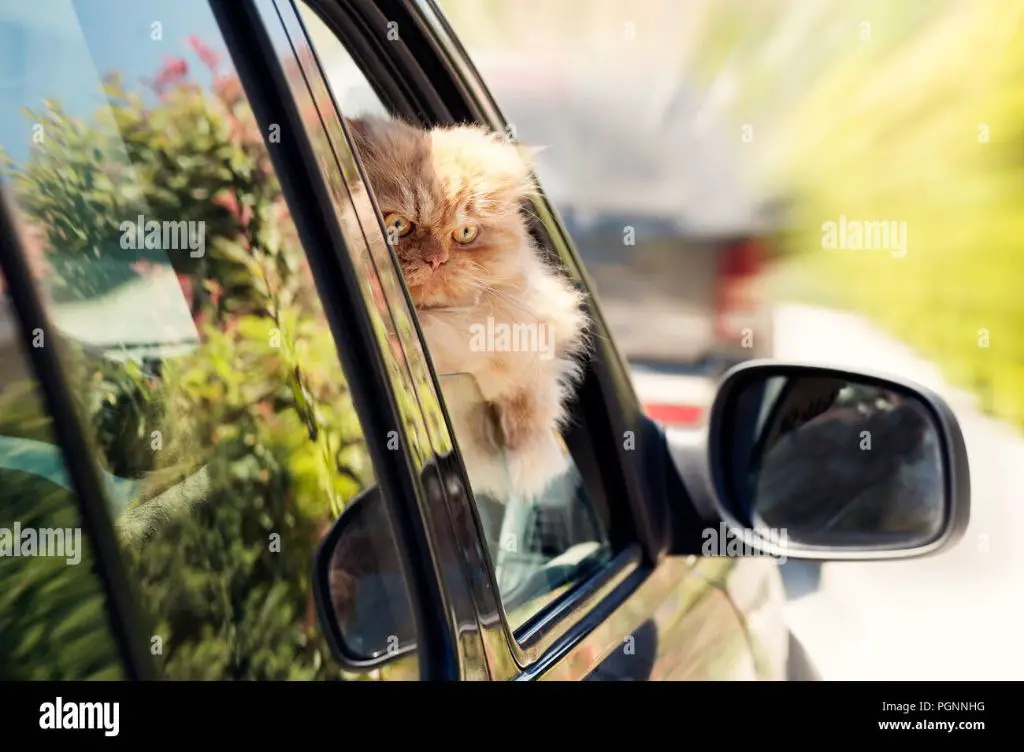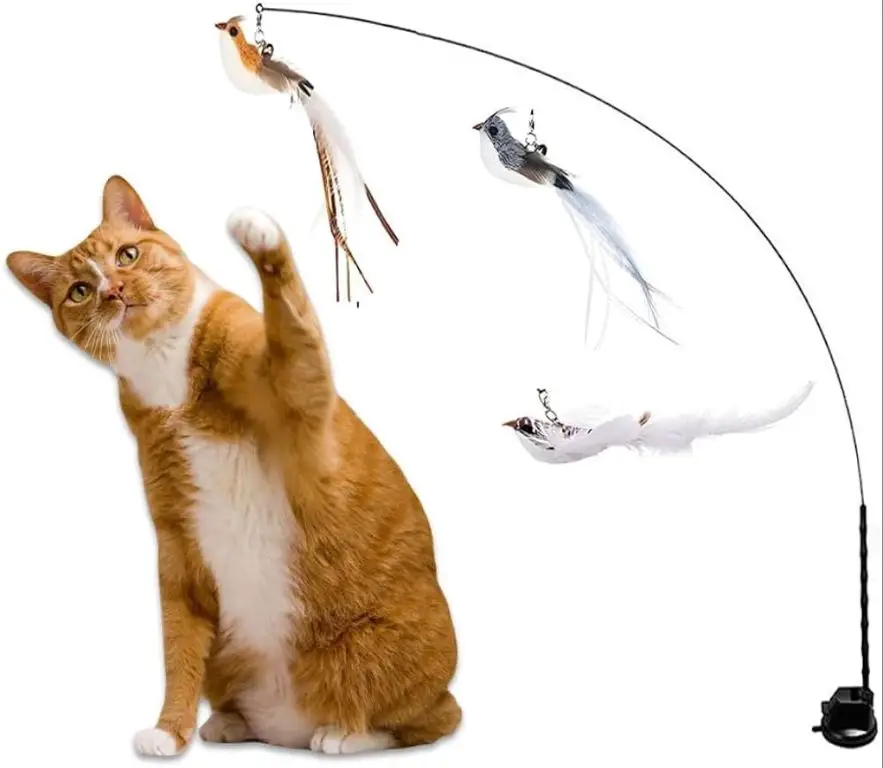Many cat owners choose not leave their furry companions behind when they travel. According to this report, 78% of pet owners take their animals along on trips. However, traveling with cats comes with unique challenges. Unlike dogs, cats are not accustomed to venturing outside their territory. The unfamiliar surroundings and situations involved with travel can be very stressful for them. Preparing properly for the trip and taking measures to keep your cat comfortable and reduce anxiety are key. This guide will provide an overview of the main considerations for cat owners who want to bring their feline friends along on their travels.
Preparing Your Cat for Travel
Getting your cat comfortable with traveling starts with getting them used to their carrier and car rides before the big trip. Introduce your cat to their carrier weeks or even months in advance so they can get accustomed to it. Place the carrier in an area your cat frequents and allow them to inspect it and enter at their own pace. You can place treats, catnip, or a soft blanket inside to encourage them to go in. Taking your cat on short car rides around the neighborhood can also help get them comfortable with the motion of the vehicle.

A few weeks before traveling, start taking your cat on longer car rides to mimic the real trip. Bring the carrier in the car and go for 20-30 minute drives. Reward good behavior with treats during and after the ride. This will help reduce anxiety and carsickness when the actual travel day arrives. According to this source, getting your cat used to their carrier and car travel is key to preparing them for any trip.
Choosing a Cat Carrier
When selecting a cat carrier for travel, pet owners have the choice between hard carriers or soft carriers. Both have their advantages and disadvantages to consider.
Hard carriers, often made of sturdy plastic, provide more structure and security for cats. They are generally approved for air travel by major airlines. Look for important features like multiple doors for accessibility, ventilation, rolled edges to avoid pinched tails or paws, and adequate space for your cat to stand up and turn around. Sturdy handles and seat belt straps are also useful add-ons. According to this source, top-rated hard cat carriers include the Sleepypod Air In-Cabin Pet Carrier and the Sherpa Original Deluxe Airline Pet Carrier.
Soft carriers, often made of breathable mesh and lightweight fabrics, tend to be more flexible and comfortable for cats. They allow owners to minimize space when stowing the carrier. However, they generally lack sturdy structure and may not be airline approved. Look for padded straps, fleece bedding, storage pockets, and mesh windows for ventilation. Top soft cat carrier picks include the Texsens Innovative Traveler Bubble Backpack Pet Carriers and the Petpeppy Expandable Pet Carrier according to this review.

When selecting any cat carrier, always ensure it is well-ventilated, easy to clean, and roomy enough for your cat to stand and turn around comfortably. Proper sizing and features will lead to less stress for both owner and cat.
Road Trips with Cats
Road trips can be a fun way to travel with your cat, but require some additional planning and preparation. One of the most important things is securing your cat’s carrier in the vehicle. Carriers should be fastened with a seat belt to prevent it from sliding around or tipping over during the drive (cats.com, 2023). The carrier should be placed on a stable, flat surface rather than on the seat. Some pet travel accessories like hammocks or barriers can help keep your cat contained in one space.
It’s crucial to stop periodically on road trips to allow your cat time out of the carrier to drink water, eat, and use the litter box if needed. Plan stops at least every 4-6 hours for these breaks. Scatter some litter in a disposable box or tray and allow your cat a chance to relieve themselves. Bring familiar food and water bowls as well for feedings. Keeping to your cat’s routine as much as possible will help reduce stress.
To make road trips easier on your cat, avoid feeding right before traveling to prevent carsickness. Bring along toys, blankets, or treats to keep them occupied and comfortable during the drive. Play calming music and refrain from yelling or loud noises that could add anxiety. Take advantages of pet-friendly hotels along your route to give your cat a comfortable overnight rest (wyndhamhotels.com, n.d.). With some preparation and patience, road trips with cats can go smoothly.
Flying with Cats
When flying with cats, it’s important to understand airport regulations and book the right pet-friendly flights. According to American Airlines, cats must meet certain size and age requirements to fly in the cabin as a carry-on. The cat must be able to stand up and turn around comfortably in their airline-approved carrier, which must fit under the seat. American, United, and most other major U.S. airlines allow up to 2 cats per passenger in the cabin for a fee of $125 per carrier.

For longer flights, some airlines like United offer climate-controlled cargo holds for transporting cats. Booking pet-friendly flights in advance is essential, as airlines only allow a certain number of animals in the cabin and cargo per flight. Arrive early at the airport to process paperwork and go through security screening with cats.
Hotels and Accommodations
When traveling with cats, it’s important to call ahead to any hotels or accommodations to check their pet policies. Many hotels allow cats, but may have size limits or extra fees. According to The 10 Best Pet-Friendly Hotels in the U.S., some of the most pet-friendly hotel chains in the United States include Kimpton, Loews Hotels, and Red Roof Inn. Kimpton in particular is known for welcoming pets with no fees or size limits. When booking your hotel, be sure to confirm the pet policy and any associated fees. It’s also a good idea to request a quiet room away from noisy areas.
Here are some top pet-friendly hotel chains to consider:
- Kimpton – extremely pet-friendly with no fees or size limits
- Loews Hotels – offer pet amenities and no fees
- Red Roof Inn – budget-friendly chain that allows pets with no fees
- La Quinta – offers pet-designated rooms
- Motel 6 – allows pets in rooms at no additional cost
By calling ahead and choosing an accommodating hotel, you can ensure a smooth stay with your feline companion.
Keeping Your Cat Safe
When traveling with your cat, it’s important to take steps to ensure their safety throughout the journey. Proper identification is crucial in case your cat gets lost. Make sure your cat’s microchip information is up to date and that they are wearing a collar with an ID tag that includes your name and phone number (Bondvet.com). You’ll also want to bring your cat’s medical records in case they need emergency veterinary care.
Research emergency veterinary clinics in the area you’ll be traveling to and program the addresses into your GPS just in case. Pack a pet first aid kit containing items like bandages, antibiotic ointment, cotton swabs, latex gloves, and a rectal thermometer. Having an emergency kit and information prepared can save precious time if your cat needs urgent care while traveling.

Only give your cat medicines or sedatives for travel if recommended by your veterinarian, as human medications can be toxic for cats. Follow your vet’s dosage instructions carefully. Avoid feeding your cat in a moving vehicle, as nausea may cause choking. Offer small treats intermittently to keep their blood sugar stable (CountryLiving.com).
Make sure your cat is always secure in their carrier in the car. Do not let them roam loose as they may get underfoot and cause an accident. Use a carrier that is crash-tested and designed to protect your cat in an impact. Regularly check that your cat is not in distress and stop for breaks every 2-3 hours (GoPetFriendly.com).
Taking basic safety precautions will help ensure your cat stays healthy and safe on your travels together.
Managing Stress and Anxiety
Travel can be very stressful for cats. There are several ways cat owners can help manage their cat’s anxiety when traveling:
Using calming pheromones like Feliway can help reduce stress. Spray Feliway in the carrier and car 10-15 minutes before the cat enters (source). The pheromones have a soothing effect.
Natural calming aids like catnip or valerian root may curb anxiety as well. Place some in the carrier as a distraction (source).
In severe cases of travel anxiety, a vet may prescribe medication to keep the cat calm. Sedatives or anti-anxiety medication can make travel less stressful but should be used cautiously (source).
Staying calm yourself can also help. Cats pick up on emotions, so remaining relaxed will provide reassurance.
With preparation and anxiety aids, cat parents can help reduce stress and make travel smooth and comfortable for their feline companion.
Fun Travel Activities
Keeping your cat entertained and enriched while traveling is important for their well-being. Here are some fun travel activities for cats:
Pack puzzles and interactive toys. Puzzles like treat-dispensing balls or snuffle mats engage your cat’s natural foraging instincts. Bring toys like feathery wands and laser pointers to get them moving and exercising.

Provide scratching surfaces. Bring corrugated cardboard scratchers or small sisal mats that they can dig their claws into.
Create playtime. Schedule play sessions throughout the day with wand toys or chase games. Take advantage of hotel bathtubs for splash playtime.
Harness train for outdoor adventures. With proper harness training beforehand, you can take your cat on safe outdoor excursions at rest stops. Always supervise closely.
Offer cat grass or catnip. These greens can provide stress relief and mental stimulation. Use cat-safe planters to minimize mess.
Bring familiar items from home. Favorite toys, beds, and blankets provide comfort through familiar scents.
Consider clicker training. Use clicker training to teach fun new behaviors like high-fives to engage their brains.
Let them look out windows. Cats love observing the world outside. Provide safe window perches or screened tent mesh for viewing.
Make sure your cat stays active and enriched throughout your travels with playtime, scratching outlets, and mental stimulation. This will help ease any stress and keep them entertained.
Conclusion
Traveling with cats can be enjoyable and stress-free for both feline and human if owners take the proper precautions and planning. The key things to keep in mind are having the right carrier and supplies, getting your cat comfortable with travel from an early age, scheduling frequent breaks during trips, securing pet-friendly lodging, and monitoring your cat’s stress levels. With patience and preparation, you can make any journey a positive experience for your cat!
Always choose a sturdy, well-ventilated carrier with familiar bedding inside. Never let your cat roam freely in a moving vehicle. Have food, litter box supplies, medication, and other necessities packed and easily accessible during the trip. Give your cat time to acclimate to a carrier and car rides before an extended travel excursion. Take frequent stops on road trips to let your cat stretch their legs in a safe, enclosed space. Research pet-friendly lodging thoroughly in advance. Monitor your cat for signs of travel anxiety like panting, howling, lack of appetite or litter box use. Stay calm during the journey, and avoid scolding anxious behaviors. The most important thing is keeping your cat’s comfort and safety at the forefront of all travel plans. With some thoughtful preparation, your cat can be the perfect travel companion.

